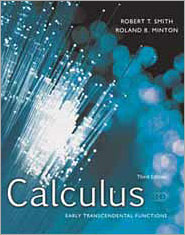 <a onClick="window.open('/olcweb/cgi/pluginpop.cgi?it=jpg::::/sites/dl/free/0073451342/295036/ch02.jpg','popWin', 'width=NaN,height=NaN,resizable,scrollbars');" href="#"><img valign="absmiddle" height="16" width="16" border="0" src="/olcweb/styles/shared/linkicons/image.gif"> (23.0K)</a> <a onClick="window.open('/olcweb/cgi/pluginpop.cgi?it=jpg::::/sites/dl/free/0073451342/295036/ch02.jpg','popWin', 'width=NaN,height=NaN,resizable,scrollbars');" href="#"><img valign="absmiddle" height="16" width="16" border="0" src="/olcweb/styles/shared/linkicons/image.gif"> (23.0K)</a> |
The marathon is one of the most famous running events, covering 26 miles and 385 yards. The race was invented for the 1896 Olympics in Greece to commemorate a famous Greek legend. Following a decisive victory over the Persian army at the Battle of Marathon, an army runner was dispatched to carry the news from Marathon to Athens. According to the legend, the runner reached Athens, shouted, "Rejoice! We conquer!" and then died.
The historic route from Marathon to Athens was used for the 2004 Olympic marathon, won by Stefano Baldini of Italy in a time of 2:10:55. It is interesting to compute his running speed. Using the physics formula "rate equals distance divided by time," we can compute Baldini's average speed of  <a onClick="window.open('/olcweb/cgi/pluginpop.cgi?it=jpg::::/sites/dl/free/0073451342/295036/ch02_eq1.jpg','popWin', 'width=NaN,height=NaN,resizable,scrollbars');" href="#"><img valign="absmiddle" height="16" width="16" border="0" src="/olcweb/styles/shared/linkicons/image.gif"> (3.0K)</a> <a onClick="window.open('/olcweb/cgi/pluginpop.cgi?it=jpg::::/sites/dl/free/0073451342/295036/ch02_eq1.jpg','popWin', 'width=NaN,height=NaN,resizable,scrollbars');" href="#"><img valign="absmiddle" height="16" width="16" border="0" src="/olcweb/styles/shared/linkicons/image.gif"> (3.0K)</a>This says that Baldini averaged less than 5 minutes per mile for over 26 miles! However, the 100-meter sprint was won by Justin Gatlin of the United States in 9.85 seconds, and the 200-meter sprint was won by Shawn Crawford of the United States in 19.79 seconds. Average speeds for these runners were  <a onClick="window.open('/olcweb/cgi/pluginpop.cgi?it=jpg::::/sites/dl/free/0073451342/295036/ch02_eq2.jpg','popWin', 'width=NaN,height=NaN,resizable,scrollbars');" href="#"><img valign="absmiddle" height="16" width="16" border="0" src="/olcweb/styles/shared/linkicons/image.gif"> (4.0K)</a> <a onClick="window.open('/olcweb/cgi/pluginpop.cgi?it=jpg::::/sites/dl/free/0073451342/295036/ch02_eq2.jpg','popWin', 'width=NaN,height=NaN,resizable,scrollbars');" href="#"><img valign="absmiddle" height="16" width="16" border="0" src="/olcweb/styles/shared/linkicons/image.gif"> (4.0K)</a>Since these speeds are much faster than that of the marathon runner, the winners of these events are often called the "World's Fastest Human."
An interesting connection can be made with a thought experiment. If the same person ran 200 meters in 19.79 seconds with the first 100 meters covered in 9.85 seconds, compare the average speeds for the first and second 100 meters. In the second 100 meters, the distance run is 200 - 100 = 100 meters and the time is 19.79 - 9.85 = 9.94 seconds. The average speed is then
 <a onClick="window.open('/olcweb/cgi/pluginpop.cgi?it=jpg::::/sites/dl/free/0073451342/295036/ch02_eq3.jpg','popWin', 'width=NaN,height=NaN,resizable,scrollbars');" href="#"><img valign="absmiddle" height="16" width="16" border="0" src="/olcweb/styles/shared/linkicons/image.gif"> (3.0K)</a> <a onClick="window.open('/olcweb/cgi/pluginpop.cgi?it=jpg::::/sites/dl/free/0073451342/295036/ch02_eq3.jpg','popWin', 'width=NaN,height=NaN,resizable,scrollbars');" href="#"><img valign="absmiddle" height="16" width="16" border="0" src="/olcweb/styles/shared/linkicons/image.gif"> (3.0K)</a> |





